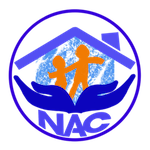The Assessment Center FrameworkAssessment Centers are a key part of a community’s continuum of support. More than 80 Centers across the U.S. help “guard the front door” of systems and serve the best interests of youth and families. In 2020, NAC began developing an updated, research-grounded Framework to bring clarity, consistency, and shared language to the model. Before NAC, no national organization existed with a mission focused on supporting Assessment Centers with technical assistance, standards, and policy guidance. As a result, Centers evolved with varied practices and quality, creating confusion about the model.
Guided by the Assessment Center Model Guiding Principles, an Advisory Committee partnered with NAC to develop the Framework. It anchors the field in research and best practice and enables Centers nationwide to operate with core components and common ways to measure impact. Download the Full Framework Access the complete document, including core components, definitions, and implementation guidance.
The Five Core ComponentsThe Framework organizes the Assessment Center model around five interlocking components that ensure equitable access, quality practice, and measurable outcomes. Single Point of Contact (Referral)Clear, accessible entry pathways that meet youth and families where they are and streamline access to help. Screening & AssessmentValidated tools and interviews that identify needs, strengths, safety, and context to guide decisions. Case ManagementIndividualized service planning, warm handoffs, and follow-up to ensure connection and engagement. AccountabilityShared expectations, timely communication, and transparent roles across partners to support progress. Staff Support & DevelopmentTraining, supervision, and wellness supports that build capacity and sustain quality practice. How Centers Use the Framework
Download the Framework (PDF) Full document with core components, definitions, and implementation guidance. Explore the Resource Library Toolkits, templates, and practice supports aligned to the Framework. Request Technical Assistance Talk with NAC about planning, implementation, and CQI support.
Have questions about the Framework?
We’re here to help your community use the model with fidelity and impact.
|

